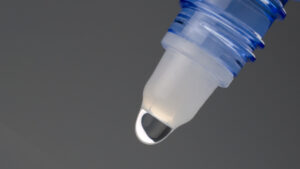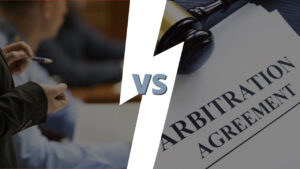
This week’s article will focus on a legal battle my firm is currently engaged in with Amazon. On Nov. 28, 2015, our client purchased, through Amazon, a hoverboard for her son for Christmas. The hoverboard was manufactured by a Chinese company, TurnUpUp. On Dec. 16, 2015, the hoverboard arrived. The shipping label said that it had been shipped by Forrinix Technology, a company in Alhambra, California. The hoverboard was opened on Christmas and enjoyed throughout the holiday. On New Year’s Eve, after a day of play, the hoverboard was plugged in to charge overnight. When the mother heard a noise coming from her son’s bedroom and went to investigate, she saw that the hoverboard was burning intensely like a firework, and the bed and bedroom were on fire. During the fire, our client suffered severe burns, and the bedroom sustained heavy fire damage. The cause of the fire was determined to be exploding lithium ion batteries.
Unbeknownst to our client and the rest of the world, Amazon had knowledge of a rash of hoverboard fires. Amazon had sold over 400,000 hoverboards in the weeks leading up to Christmas. It had over 60,000 separate listings for hoverboards at the peak of the season. Amazon had been receiving reports of fires associated with hoverboards around the world. According to testimony I obtained during a deposition of the head of Amazon’s Product Safety and Recalls Team, Mr. Jones, by mid-November 2015, Amazon was “monitoring” hoverboard fire issues, reviewing cases from as far back as January 2014. As Christmas approached, Amazon was in almost daily contact with the United States Consumer Products Safety Commission (CPSC) passing along reports of fires that Amazon had received from its customers.
Indeed, the CPSC had asked Amazon to monitor and report all hoverboard fires as Amazon was the largest single seller of these products in the U.S. and Amazon could directly communicate with purchasers. By Nov. 20, 2015, Amazon was aware that Costco, concerned for the safety of its customers, had pulled hoverboards from their shelves and stopped selling them to the public. Because of concern over fires, on Dec. 4, 2010, Amazon had pulled all hoverboard listings from its United Kingdom sales platform but kept selling them in the U.S. Finally, on Dec. 10, 2015, Doug Herrington, head of Amazon’s North American retail business, made the decision to remove all third-party sellers’ hoverboards from its website because of complaints “of hoverboards/batteries catching fire or exploding, or of sparking battery charges for hoverboards,” and because of concerns that the reports “might be indicative of safety issues of these products across Chinese manufacturing.” Over 60,000 separate listings were taken down from Amazon’s “marketplace.”
Although Amazon stopped selling hoverboards, Amazon neither stopped delivery of those in transit, nor did our client receive any notice from Amazon about the potential for fire.
Under California law, anyone or any enterprise in the “chain of distribution” between the manufacturer and the retailer can be held liable for injuries caused by the product. This makes everybody who is involved in the sale of the product is responsible for making sure the products are safe, which is a benefit to every consumer. They can inspect them, reject them, research them and otherwise determine if they are suitable for sale.
Additionally, they are in the best position to purchase insurance, which can cover injuries caused to consumer and at a fraction the cost of that among the many products they sell, thereby increasing the price only slightly while incorporating the true costs of the product into its sales price. If the true costs, including insurance, make the product too expensive, then application of free market principles should lead to it being discontinued from sale. This increases the cost a few pennies spread across all who use the product, which is fairer than having one injured person bear all the costs and losses associated with the product when they are injured. That is, in effect, a subsidy. (OK, I am revealing what I learned in one of my degrees involving law and economics.)
Amazon claims it is not in the chain of distribution: it is just a new form of classified advertising. This is BS. Amazon is the largest single seller of products. In its own documentation, Amazon calls itself a retailer. It gets paid a posting fee for each item listed. Amazon completely controls the content of each posting and has the right to edit and delete it. Buyers and sellers must communicate only through Amazon, and they cannot contact each other directly. The financial transaction is handled through Amazon. Amazon takes a percentage of every product sold, including shipping. Any product difficulties or complaints must go through Amazon. If a product is returned, Amazon charges the seller a return fee. Amazon offers an A-Z guaranty saying it will make the customer satisfied, including a refund, even if the manufacturer goes out of business. And now Amazon has fulfillment centers where it keeps stock on hand to satisfy orders.
Amazon has changed the landscape of our world, causing people to lose retail jobs by the hundreds of thousands. Amazon is one of the most valuable companies in the world. It must step up and be responsible corporate citizens instead of just not caring what it sells and if the consumer gets hurt.
To change this, I am working with the Consumer Attorneys of California to get a law passed, which would make Amazon just as responsible as any other retailer when the products it sells cause harm. It’s part of what I think a lawyer representing injured people should do: protect their rights and fight against corporate greed.
Christopher B. Dolan is owner of the Dolan Law Firm. Email questions and topics for future articles to help@dolanlawfirm.com.
We serve clients across the San Francisco Bay Area and California from our offices in San Francisco, Oakland, and Los Angeles. Our work is no recovery, no fee or also referred to as contingency-based. That means we collect no fee unless we obtain money for your damages and injuries.









